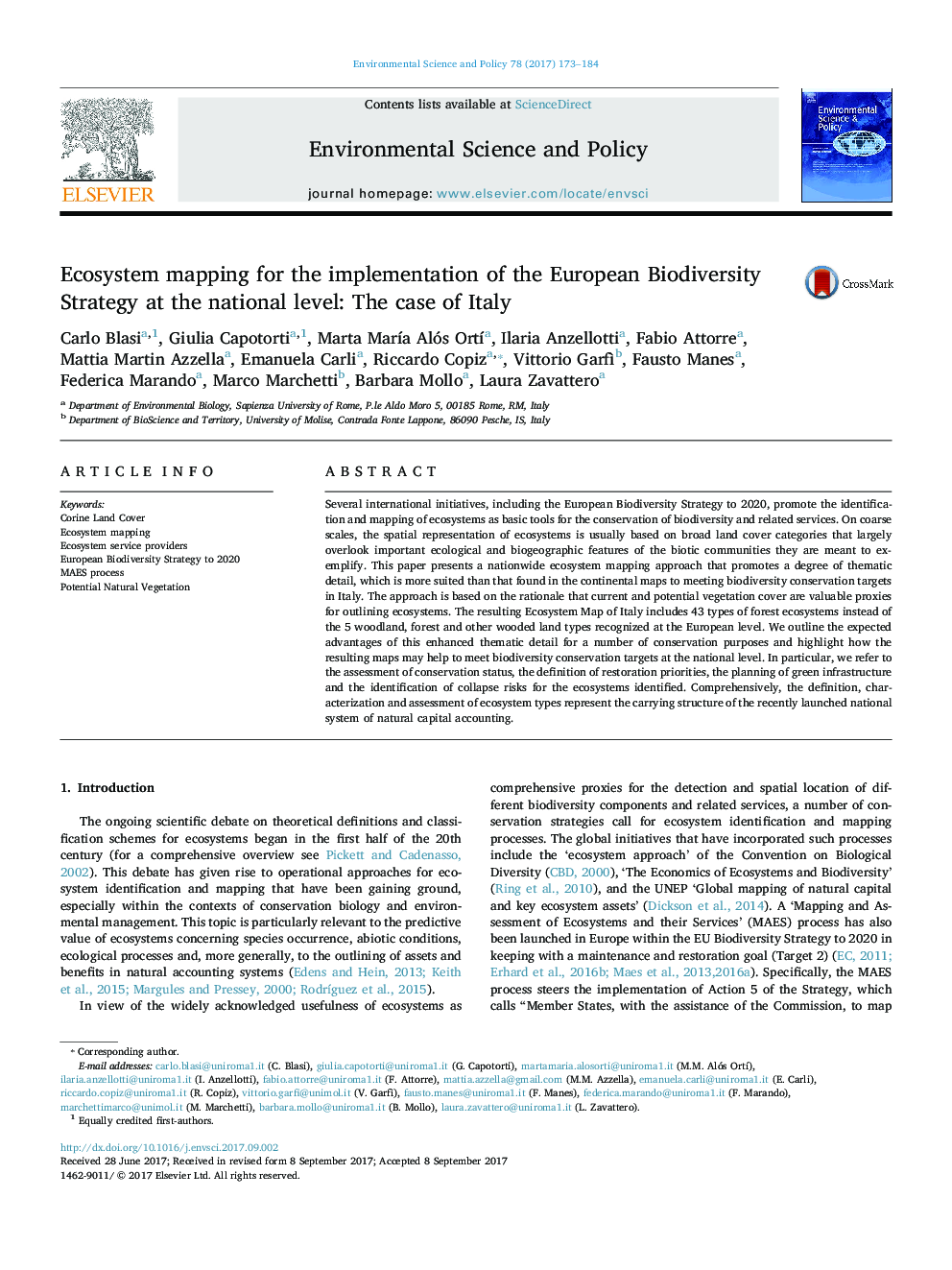| Article ID | Journal | Published Year | Pages | File Type |
|---|---|---|---|---|
| 7466395 | Environmental Science & Policy | 2017 | 12 Pages |
Abstract
Several international initiatives, including the European Biodiversity Strategy to 2020, promote the identification and mapping of ecosystems as basic tools for the conservation of biodiversity and related services. On coarse scales, the spatial representation of ecosystems is usually based on broad land cover categories that largely overlook important ecological and biogeographic features of the biotic communities they are meant to exemplify. This paper presents a nationwide ecosystem mapping approach that promotes a degree of thematic detail, which is more suited than that found in the continental maps to meeting biodiversity conservation targets in Italy. The approach is based on the rationale that current and potential vegetation cover are valuable proxies for outlining ecosystems. The resulting Ecosystem Map of Italy includes 43 types of forest ecosystems instead of the 5 woodland, forest and other wooded land types recognized at the European level. We outline the expected advantages of this enhanced thematic detail for a number of conservation purposes and highlight how the resulting maps may help to meet biodiversity conservation targets at the national level. In particular, we refer to the assessment of conservation status, the definition of restoration priorities, the planning of green infrastructure and the identification of collapse risks for the ecosystems identified. Comprehensively, the definition, characterization and assessment of ecosystem types represent the carrying structure of the recently launched national system of natural capital accounting.
Related Topics
Physical Sciences and Engineering
Energy
Renewable Energy, Sustainability and the Environment
Authors
Carlo Blasi, Giulia Capotorti, Marta MarÃa Alós OrtÃ, Ilaria Anzellotti, Fabio Attorre, Mattia Martin Azzella, Emanuela Carli, Riccardo Copiz, Vittorio Garfì, Fausto Manes, Federica Marando, Marco Marchetti, Barbara Mollo, Laura Zavattero,
